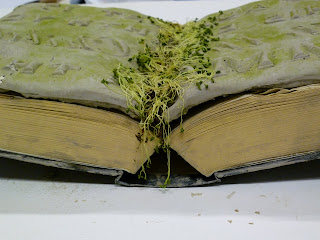This piece was a set of two consertina's that I made in print during my second semester of 1st year. They were created using two etching plates one plate per consertina, I did this because I was interested in how the print faded with each application. From doing this I arranged them in a sequence of dark to light which would emphasise the journey a leaf progresses through, from life until death.
I especially enjoyed working with dried out leaves when printing as they resulted in a much more defined impression, showing the prominent skeleton of the the leaf. I found through trial and error that fresh leaves were less successful in terms of printing as they would purely soak up the ink and bleed onto the card.
By looking specifically at leaves it allowed me to look at the life cycle and the obvious signs of age and decay, since these signs of ageing manifest themselves quicker in leaves than in any other material that I used within my practice.























